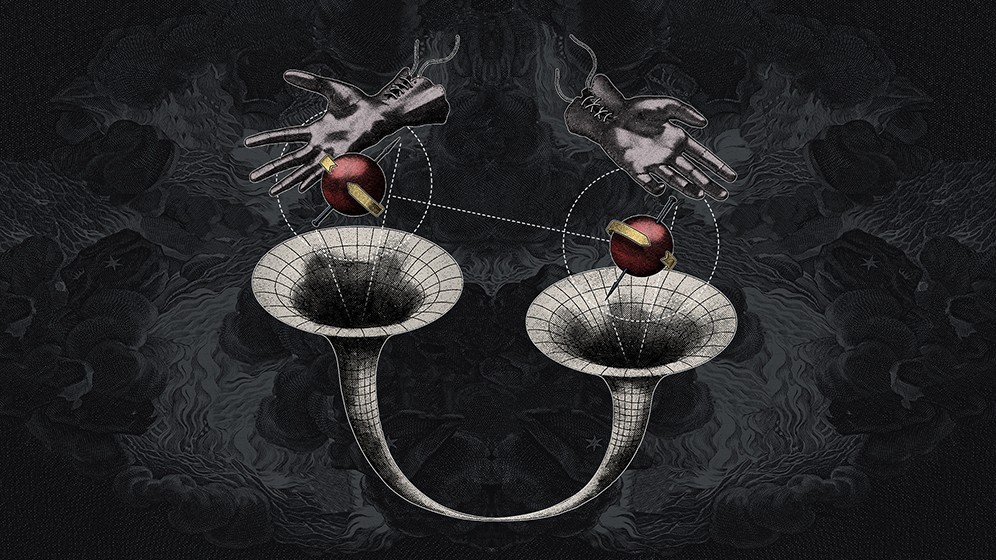https://www.quantamagazine.org/20150424-wormholes-entanglement-firewalls-er-epr/
If two quantum particles are entangled, they become, in effect, two parts of a single unit. What happens to one entangled particle happens to the other, no matter how far apart they are.
If you come upon the right-handed glove, you instantaneously know the other is left-handed. There’s nothing spooky about that. But in the quantum version, both gloves are actually left- and right-handed (and everything in between) up until the moment you observe them. Spookier still, the left-handed glove doesn’t become left until you observe the right-handed one
Hawking realized that if one particle fell into a black hole and the other escaped, the hole would emit radiation, glowing like a dying ember. Given enough time, the hole would evaporate into nothing, raising the question of what happened to the information content of the stuff that fell into it.
But the rules of quantum mechanics forbid the complete destruction of information. (Hopelessly scrambling information is another story, which is why documents can be burned and hard drives smashed. There’s nothing in the laws of physics that prevents the information lost in a book’s smoke and ashes from being reconstructed, at least in principle.) So the question became: Would the information that originally went into the black hole just get scrambled? Or would it be truly lost? The arguments set off what Susskind called the “black hole wars.
Eventually Susskind — in a discovery that shocked even him — realized (with Gerard ’t Hooft) that all the information that fell down the hole was actually trapped on the black hole’s two-dimensional event horizon, the surface that marks the point of no return. The information wasn’t lost — it was scrambled and stored out of reach. The horizon encoded everything inside, like a hologram.
That left open the question of what goes on in the interiors, said Susskind, and answers to that “were all over the map.” After all, since no information could ever escape from inside a black hole’s horizon, the laws of physics prevented scientists from ever directly testing what was going on inside.
Then in 2012 Polchinski, along with Ahmed Almheiri, Donald Marolf and James Sully, all of them at the time at Santa Barbara, came up with an insight so startling it basically said to physicists: Hold everything. We know nothing.
If a black hole’s event horizon is a smooth, seemingly ordinary place, as relativity predicts (the authors call this the “no drama” condition), the particles coming out of the black hole must be entangled with particles falling into the black hole. Yet for information not to be lost, the particles coming out of the black hole must also be entangled with particles that left long ago and are now scattered about in a fog of Hawking radiation. That’s one too many kinds of entanglements, the AMPS authors realized. One of them would have to go.
The reason is that maximum entanglements have to be monogamous, existing between just two particles. Two maximum entanglements at once — quantum polygamy — simply cannot happen, which suggests that the smooth, continuous space-time inside the throats of black holes can’t exist.
